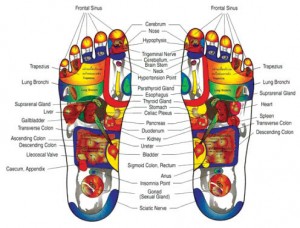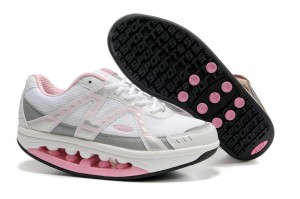 From 20-inch chopines worn by women in Europe from the 15th century, where high heels signified greater social standing, to men in France who would wear heels of three to four inches in the 17th century, the fashion-conscious decades have left the modern era with torturous Molono Blahniks towering up over five inches. Courtesans of Europe had at least a person to help them balance while walking, and a long walking stick!
From 20-inch chopines worn by women in Europe from the 15th century, where high heels signified greater social standing, to men in France who would wear heels of three to four inches in the 17th century, the fashion-conscious decades have left the modern era with torturous Molono Blahniks towering up over five inches. Courtesans of Europe had at least a person to help them balance while walking, and a long walking stick!
Different kinds of shoes put pressure on different parts of your foot, from the balls, heels and arches. The higher the heels, the greater stress is placed on the toes and ankle joints. These can cause a number of longlasting health issues. The “chronic” part about wearing heels for a long time – it can affect your muscles, your balance and cause deformities. The number one problem is generic joint disease, osteoarthritis. As women get older, deterioration in bone and muscle causes arches of the feel to become lax. Our feel need support. There are a number of muscles and tendons in the feet. Especially for those who exercise at any age, you need to make sure that you have a good fitting shoe that is designed for the sport you are taking part in. The wrong footwear can cause shin splints and joint problems that lead to a lifetime of pain.
On the other hand, there are kinds of shoes that manufacturers claim can give you slimmer legs, help reduce cellulite, tone your hips and help you lose weight. For example, FitFlops have become popular in India too as these fashionable flip flops not only reduce joint stress but also increase muscle activation – a shoe with a gym built in!
Acupressure and reflexology are fast becoming popular as healing forms of therapy. These kind of shoes provide gentle and effective stimulation to the feet. They can help immensely in improving circulation and helping one to relax. Some shoes also come with therapeutic magnets that stimulate the traditional reflexology points in your feet. Stimulation of these points, it is claimed, relieves foot discomfort and rejuvenates the entire foot. Acupressure insoles are also available in different sizes for those who want to add them to their existing shoes.
The barefoot movement advocates not wearing shoes at all under growing evidence that shoes do more harm to us that good. In the barefoot movement, people take part in outdoor activities without wearing any shoes. The barefoot movement believes that walking on hard concrete surfaces in the modern world has resulted in a number of health problems. Now, by using specially designed shoes, we need to learn how to walk the way our feet were designed to and to use long forgotten muscles in our soles. Several companies cater to the barefoot movement, such as Masai Barefoot Technology (MBT), Vivo Barefoot and Vibram FiveFingers.
 MBTs have quite thick rolling heels to replicate the uneven terrain that we were meant to walk on. Vibram FiveFingers and Vivo Barefoot on the other hand have a thin sole, mimicking the feel of walking as close to the ground as possible. These initially hurt when users first wear them, as we are unaccustomed to walking without a think sole. However, once one gets accustomed to them, then they grow to be extremely comfortable. FiveFingers are designed to “stimulate the muscles in your feet and lower legs to build strength and improve range of motion”. These have thin rubber soles and individual compartments for each toe, just like gloves. These spread your toes further apart, strengthening muscles and improving circulation. People who wear them for a long time report that they feel more connected with their surroundings, including awareness of the surfaces that they walk on as well as better balance, posture and agility.
MBTs have quite thick rolling heels to replicate the uneven terrain that we were meant to walk on. Vibram FiveFingers and Vivo Barefoot on the other hand have a thin sole, mimicking the feel of walking as close to the ground as possible. These initially hurt when users first wear them, as we are unaccustomed to walking without a think sole. However, once one gets accustomed to them, then they grow to be extremely comfortable. FiveFingers are designed to “stimulate the muscles in your feet and lower legs to build strength and improve range of motion”. These have thin rubber soles and individual compartments for each toe, just like gloves. These spread your toes further apart, strengthening muscles and improving circulation. People who wear them for a long time report that they feel more connected with their surroundings, including awareness of the surfaces that they walk on as well as better balance, posture and agility.
These barefoot shoes help to embrace the health options of going without shoes without any worries of injuries, dirt or germs getting attached to your feet. So feel the pleasure of going barefoot from the bottom up!
Volume 1 Issue 12




























